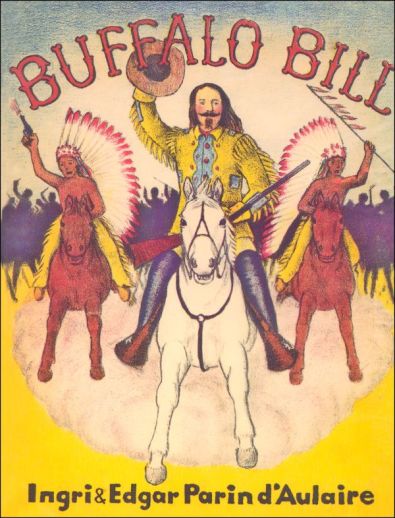We use cookies to make your experience better. To comply with the new e-Privacy directive, we need to ask for your consent to set the cookies. Learn more.
Buffalo Bill (D'Aulaire)
The d'Aulaires have captured the allure of one of America's frontier icons in the drama of their lush lithographs and in a text that brings to life the story of the fearless and wild Buffalo Bill.
William F. Cody was born in the middle of the nineteenth century on the plains of Kansas Territory where his family had settled to trade with the friendly Kickapoo Tribe. The Kickapoo children were Bill's childhood playmates and at a tender age he traded his brand-new buckskin suit for a little wild pony that he learned to ride like the wind. By the time he was twelve, he was doing the work of a grown man as a cattle driver, camping under the stars each night. When he was caught in a buffalo stampede his horsemanship saved his life.
Travel along with Bill and his adventures that included meeting wilderness scout Kit Carson, signing up to carry mail on the new Pony Express, fighting in the Civil War, and performing in his Wild West Show which took him around the country for forty years.


part of a gentle feast curriculum
We are using this in our History this year, I have a collection of these beautiful books so I needed this one. My children love them.
for a homeschool curriculum
homeschool